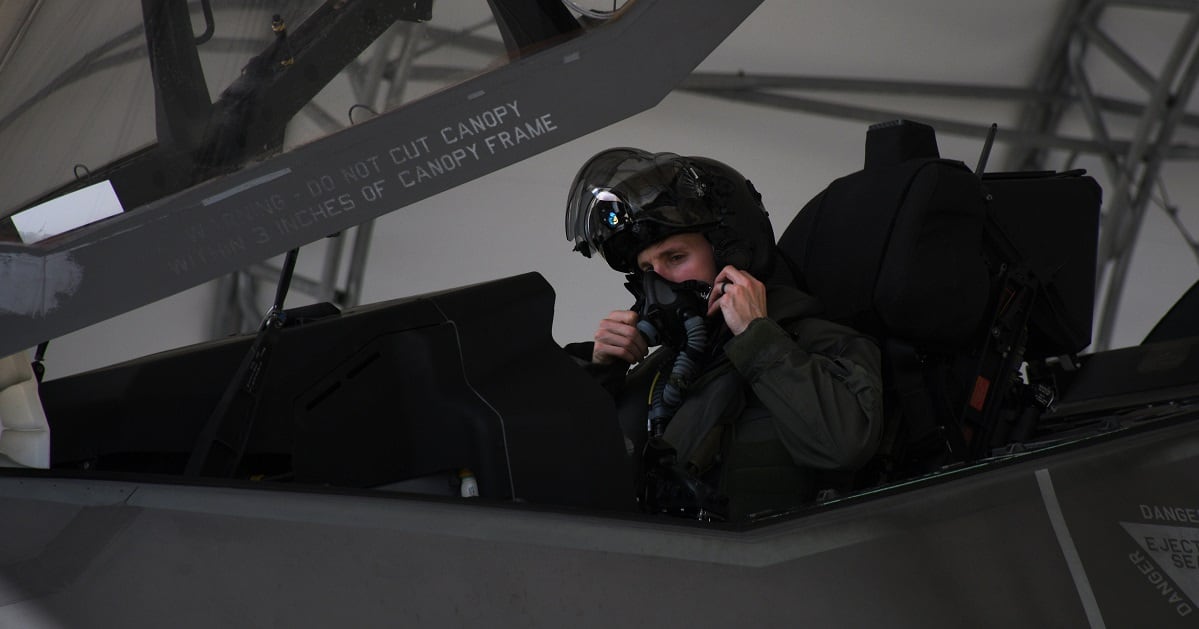WASHINGTON — A subpanel of the House Armed Services Committee wants the Pentagon to take a second look at the F-35 jet’s pilot breathing systems, which may be contributing to physiological episodes where pilots reported oxygen deprivation.
Last week, the Tactical Air and Land Forces Subcommittee released its portion of the fiscal 2022 defense policy bill, which contained a provision requiring the Defense Department to investigate and implement corrective actions for the F-35′s pilot breathing system.
Although the FY21 version of the National Defense Authorization Act required the Pentagon to assess the root causes of physiological episodes occurring inside the Lockheed Martin-made aircraft, a report by NASA published in November 2020 has raised further concerns that the F-35′s breathing systems may not meet pilot needs, said a congressional aide who spoke with reporters July 28.
“They had some pretty concerning findings,” the aide said.
The NASA study — which used interviews with pilots and data from two F-35s during ground tests — found the Joint Strike Fighter does not continually supply the amount of oxygen needed by pilots, forcing operators to change their breathing rates to compensate.
“Pilots who have suffered [physiological episodes] in the F-35 … fault the breathing system for acute and chronic health conditions that have caused impairment for days, weeks, months, or longer,” the study stated.
By mandating a more comprehensive evaluation, the committee hopes to quickly correct technical problems before the services are locked into conducting expensive retrofits for a huge portion of their fighter inventory.
“Unfortunately it’s taken Congress to get the department to look at those issues and take action,” the aide said.
“We want to make sure that instead of the pilot having to adapt to the jet, the jet needs to make sure that it complies with the military specifications required for pilot breathing systems,” the aide added. “The pilot shouldn’t have to think about breathing in the airplane. It should just come naturally so that they can focus on the tactical employment.”
F-35 physiological episodes first came to the forefront in 2017, when the 56th Fighter Wing at Luke Air Force Base, Arizona, grounded its F-35A conventional-takeoff-and-landing aircraft for several weeks. At the time, multiple pilots reported experiencing the symptoms of hypoxia, or oxygen deprivation.
After studying the issue, the F-35 Joint Program Office announced that it would make software changes to the onboard oxygen-generation system, which is produced by Honeywell. JPO officials believed that by amending the amount of oxygen delivered to pilots at altitude, it could lower the number of physiological episodes experienced by pilots.
More than 40 physiological episodes have been reported by F-35 pilots, the committee aide said.
Air Force Magazine reported that 27 of those incidents have occurred in U.S. Air Force F-35As, including one F-35A crash in May 2020 where the “work of breathing” may have adversely impacted the pilot’s cognitive functions, according to the accident investigation.
The number of physiological events in the F-35A has trickled downward since FY17, when there was a spike of nine incidents, according to Air Force Magazine. The Air Force logged four episodes in FY18, three in FY19 and five in FY20.
It’s unclear whether the subcommittee’s mandate for further study into F-35 physiological incidents will ultimately make it into the final version of the NDAA.
HASC is set to mark up its proposed legislation on Sept. 1. Once approved by the full committee, HASC members and their counterparts in the Senate will begin work on a compromise version of the bill.
Valerie Insinna is Defense News' air warfare reporter. She previously worked the Navy/congressional beats for Defense Daily, which followed almost three years as a staff writer for National Defense Magazine. Prior to that, she worked as an editorial assistant for the Tokyo Shimbun’s Washington bureau.





